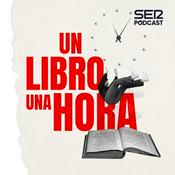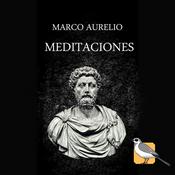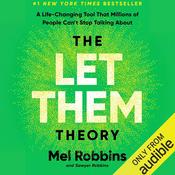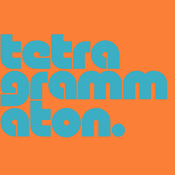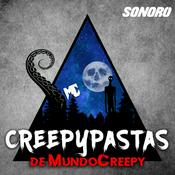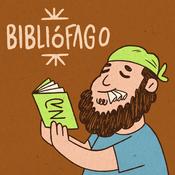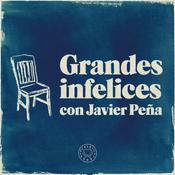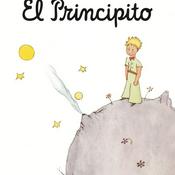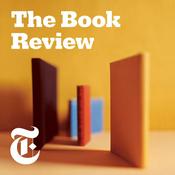194 episodios

Tracey Norman and Mark Norman, "Devon's Forgotten Witches: 1860–1910" (The History Press, 2025)
23/12/2025 | 57 min
Witchcraft and witches throughout history have long captured the imagination, yet hidden away in archives are records of long forgotten cases. Many of these are tragic, some are unusual – perhaps even inexplicable – but all are fascinating in their own right. Devon’s Forgotten Witches 1860–1910 (The History Press, 2025) by Mark Norman and Tracey Norman takes a deep dive through these records, bringing to the surface accusations of witchcraft in the county that have languished, unacknowledged, in the British Newspaper Archive for decades. These are the stories of ordinary people whose lives were touched in some way by witchcraft. Tracey Norman and Mark Norman examine these cases within their historical context, pulling together details from various news reports to explore what might really have happened. This work provides an intriguing snapshot of press coverage in the Victorian and Edwardian eras, showing how the public were urged to view those who still put their faith in ‘incredible superstition’. Most importantly, the retelling of these stories gives a new voice to those whom the historical record has silenced. This interview was conducted by Dr. Miranda Melcher whose book focuses on post-conflict military integration, understanding treaty negotiation and implementation in civil war contexts, with qualitative analysis of the Angolan and Mozambican civil wars. You can find Miranda’s interviews on New Books with Miranda Melcher, wherever you get your podcasts. Learn more about your ad choices. Visit megaphone.fm/adchoices Support our show by becoming a premium member! https://newbooksnetwork.supportingcast.fm/folkore

Andrea Kitta, "The Kiss of Death: Contagion, Contamination, and Folklore" (Utah State UP, 2019)
08/11/2025 | 1 h 9 min
Disease is a social issue and not just a medical one. This is the central tenet underlying The Kiss of Death: Contagion, Contamination, and Folklore (Utah State University Press 2019) by Andrea Kitta, Associate Professor in the English department at East Carolina University, examines the discourses and metaphors of contagion and contamination in vernacular beliefs and practices across a number of media and forms. Using ethnographic, media, and narrative analysis, chapters discuss the changing representations of vampires and zombies in popular culture, the online discussions of Slenderman in relation to adolescent experiences of bullying, the misogyny embedded in legends about kisses that kill, and the racialized nature of patient-zero narratives that surrounding the spread of things like ebola, and the ways in which the HPV vaccine to homophobia. Issues like tellability and the stigmatized vernacular loom large throughout. Although folklorists will already recognize the social importance of vernacular narrative and belief, The Kiss of Death also shows how medical professionals have often failed to take vernacular forms into account. Through attention to narrative and vernacular belief, folklorists can model new forms of engaging with public health professionals and local communities. Timothy Thurston is Lecturer in Chinese Studies at the University of Leeds. His research examines language at the nexus of tradition and modernity in China’s Tibet. Learn more about your ad choices. Visit megaphone.fm/adchoices Support our show by becoming a premium member! https://newbooksnetwork.supportingcast.fm/folkore

Jessica Campbell, "The Brontës and the Fairy Tale" (Ohio UP, 2024)
01/11/2025 | 55 min
The Brontës and the Fairy Tale (Ohio UP, 2024) by Dr. Jessica Campbell is the first comprehensive study devoted to the role of fairy tales and folklore in the work of Charlotte, Emily, Anne, and Branwell Brontë. It intervenes in debates on genre, literary realism, the history of the fairy tale, and the position of women in the Victorian period. Building on recent scholarship emphasizing the dynamic relationship between the fairy tale and other genres in the nineteenth century, the book resituates the Brontës’ engagement with fairy tales in the context of twenty-first-century assumptions that the stories primarily evoke childhood and happy endings. Dr. Campbell argues instead that fairy tales and folklore function across the Brontës’ works as plot and character models, commentaries on gender, and signifiers of national identity.Scholars have long characterized the fairy tale as a form with tremendous power to influence cultures and individuals. The late twentieth century saw important critical work revealing the sinister aspects of that power, particularly its negative effects on female readers. But such an approach can inadvertently reduce the history of the fairy tale to a linear development from the “traditional” tale (pure, straight, patriarchal, and didactic) to the “postmodern” tale (playful, sophisticated, feminist, and radical). Dr. Campbell joins other contemporary scholars in arguing that the fairy tale has always been a remarkably elastic form, allowing writers and storytellers of all types to reshape it according to their purposes.The Brontës are most famous today for Jane Eyre and Wuthering Heights, haunting novels that clearly repurpose fairy tales and folklore. Dr. Campbell’s book, however, reveals similar repurposing throughout the entire Brontë oeuvre. The Brontës and the Fairy Tale is recursive: in demonstrating the ubiquity and multiplicity of uses of fairy tales in the works of the Brontës, Campbell enhances not only our understanding of the Brontës’ works but also the status of fairy tales in the Victorian period. This interview was conducted by Dr. Miranda Melcher whose book focuses on post-conflict military integration, understanding treaty negotiation and implementation in civil war contexts, with qualitative analysis of the Angolan and Mozambican civil wars. You can find Miranda’s interviews on New Books with Miranda Melcher, wherever you get your podcasts. Learn more about your ad choices. Visit megaphone.fm/adchoices Support our show by becoming a premium member! https://newbooksnetwork.supportingcast.fm/folkore

John Blair, "Killing the Dead: Vampire Epidemics from Mesopotamia to the New World" (Princeton UP, 2025)
30/10/2025 | 51 min
Killing the Dead: Vampire Epidemics from Mesopotamia to the New World (Princeton UP, 2025) by Professor John Blair provides the first in-depth, global account of one of the world’s most widespread yet misunderstood forms of mass hysteria—the vampire epidemic. In a spellbinding narrative, Dr. Blair takes readers from ancient Mesopotamia to present-day Haiti to explore a macabre frontier of life and death where corpses are believed to wander or do harm from the grave, and where the vampire is a physical expression of society’s inexplicable terrors and anxieties.In 1732, the British public opened their morning papers to read of lurid happenings in eastern Europe. Serbian villagers had dug up several corpses and had found them to be undecayed and bloated with blood. Recognizing the marks of vampirism, they mutilated and burned them. Centuries earlier, the English themselves engaged in the same behavior. In fact, vampire epidemics have flared up throughout history—in ancient Assyria, China, and Rome, medieval and early modern Europe, and the Americas. Blair blends the latest findings in archaeology, anthropology, and psychology with vampire lore from literature and popular culture to show how these episodes occur at traumatic moments in societies that upend all sense of security, and how the European vampire is just one species in a larger family of predatory supernatural entities that includes the female flying demons of Southeast Asia and the lustful yoginīs of India.Richly illustrated, Killing the Dead provocatively argues that corpse-killing, far from being pathological or unhealthy, served as a therapeutic and largely harmless outlet for fear, hatred, and paranoia that would otherwise result in violence against marginalized groups and individuals. This interview was conducted by Dr. Miranda Melcher whose book focuses on post-conflict military integration, understanding treaty negotiation and implementation in civil war contexts, with qualitative analysis of the Angolan and Mozambican civil wars. You can find Miranda’s interviews on New Books with Miranda Melcher, wherever you get your podcasts. Learn more about your ad choices. Visit megaphone.fm/adchoices Support our show by becoming a premium member! https://newbooksnetwork.supportingcast.fm/folkore

Matthias Egeler, "Elves and Fairies: A Short History of the Otherworld" (Yale UP, 2025)
11/10/2025 | 42 min
Originating in Norse and Celtic mythologies, elves and fairies are a firmly established part of Western popular culture. Since the days of the Vikings and Arthurian legend, these sprites have undergone huge transformations. From J. R. R. Tolkien’s warlike elves, based on medieval legend, to little flower fairies whose charms even Sir Arthur Conan Doyle succumbed to, they permeate European art and culture. In Elves and Fairies: A Short History of the Otherworld (Yale University Press, 2025), Dr. Matthias Egeler explores these mythical creatures of Iceland, Ireland, Scotland, and England, and their continental European cousins. Dr. Egeler goes on a journey through enchanted landscapes and literary worlds. He describes both their friendly and their dangerous, even deadly, sides. We encounter them in the legends of King Arthur’s round table and in Shakespeare’s A Midsummer Night’s Dream, in the terrible era of the witch trials, in magic’s peaceful conquest of Victorian bourgeois salons, in the child-friendly form of Peter Pan, and even as helpers in the contemporary fight against environmental destruction. This interview was conducted by Dr. Miranda Melcher whose book focuses on post-conflict military integration, understanding treaty negotiation and implementation in civil war contexts, with qualitative analysis of the Angolan and Mozambican civil wars. You can find Miranda’s interviews on New Books with Miranda Melcher, wherever you get your podcasts. Learn more about your ad choices. Visit megaphone.fm/adchoices Support our show by becoming a premium member! https://newbooksnetwork.supportingcast.fm/folkore
Más podcasts de Arte
Podcasts a la moda de Arte
Acerca de New Books in Folklore
Escucha New Books in Folklore, El Arte de la Guerra de Sun Tzu y muchos más podcasts de todo el mundo con la aplicación de radio.net
Descarga la app gratuita: radio.net
- Añadir radios y podcasts a favoritos
- Transmisión por Wi-Fi y Bluetooth
- Carplay & Android Auto compatible
- Muchas otras funciones de la app
Descarga la app gratuita: radio.net
- Añadir radios y podcasts a favoritos
- Transmisión por Wi-Fi y Bluetooth
- Carplay & Android Auto compatible
- Muchas otras funciones de la app

New Books in Folklore
Descarga la app,
Escucha.



